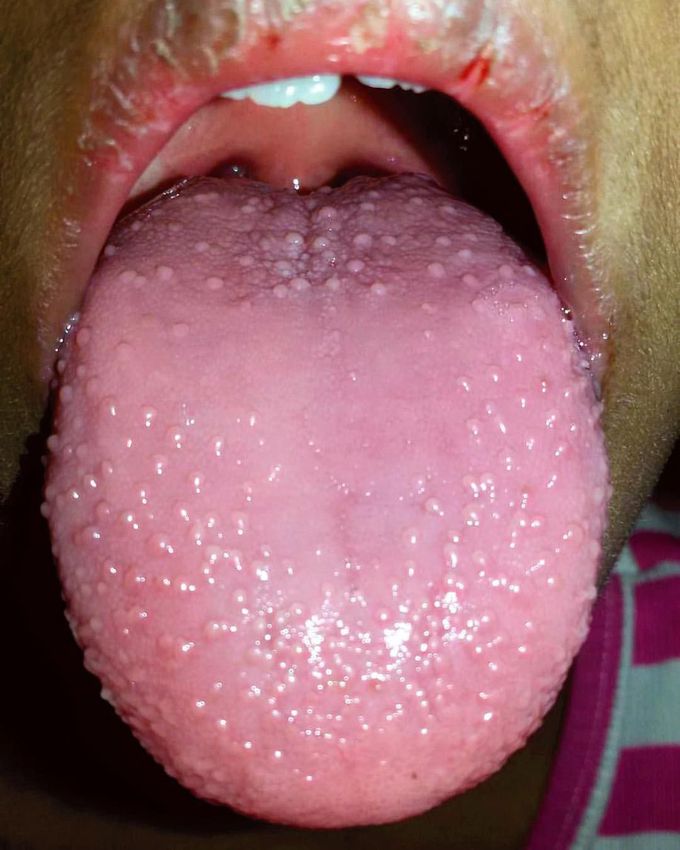


This is literally called a strawberry tongue!!
An 8-year-old girl was admitted to the hospital with 7-day history of fever and rash. She had a diffuse macular rash, fissured lips, and strawberry tongue, and her temperature was 39°C. She had nonexudative conjunctival injection in both eyes, a few enlarged cervical lymph nodes, erythema of the palms and soles, mild edema of the hands, and periungual desquamation. The cardiac examination was normal. A clinical diagnosis of Kawasaki’s disease was made. Kawasaki’s disease is a vasculitis of childhood. It occurs most frequently in children younger than 5 years of age and typically affects medium-sized arteries in any body organ but there is a predilection for the coronary vessels. One extremely characteristic feature is red, dry, cracked lips and an extremely red, swollen tongue (strawberry tongue). Other symptoms are fever, conjunctivitis, lymphadenopathy, and mucocutaneous inflammation (erythema of lips, tongue, palate; peripheral edema, desquamation, and generalized rash). Accurate diagnosis and early therapeutic interventions can decrease the risk of coronary-artery abnormalities. There is no diagnostic test that is specific for Kawasaki’s disease; diagnosis is based on characteristic clinical findings and the exclusion of other possibilities in the differential diagnosis, including other infectious exanthems of childhood and reactions to drugs. She was treated with aspirin and immune globulin on admission and at a follow-up visit 8 weeks later. Image by @nejm
immuno modulation.. to control the inflammation (which is regulated by Antibodies) ..!
there was a time when i thought its etiology was riding a kawasaki bike..damn
Hemodynamic stimuli&nonhemodynamic stimuliEffects of sugar on teeth




